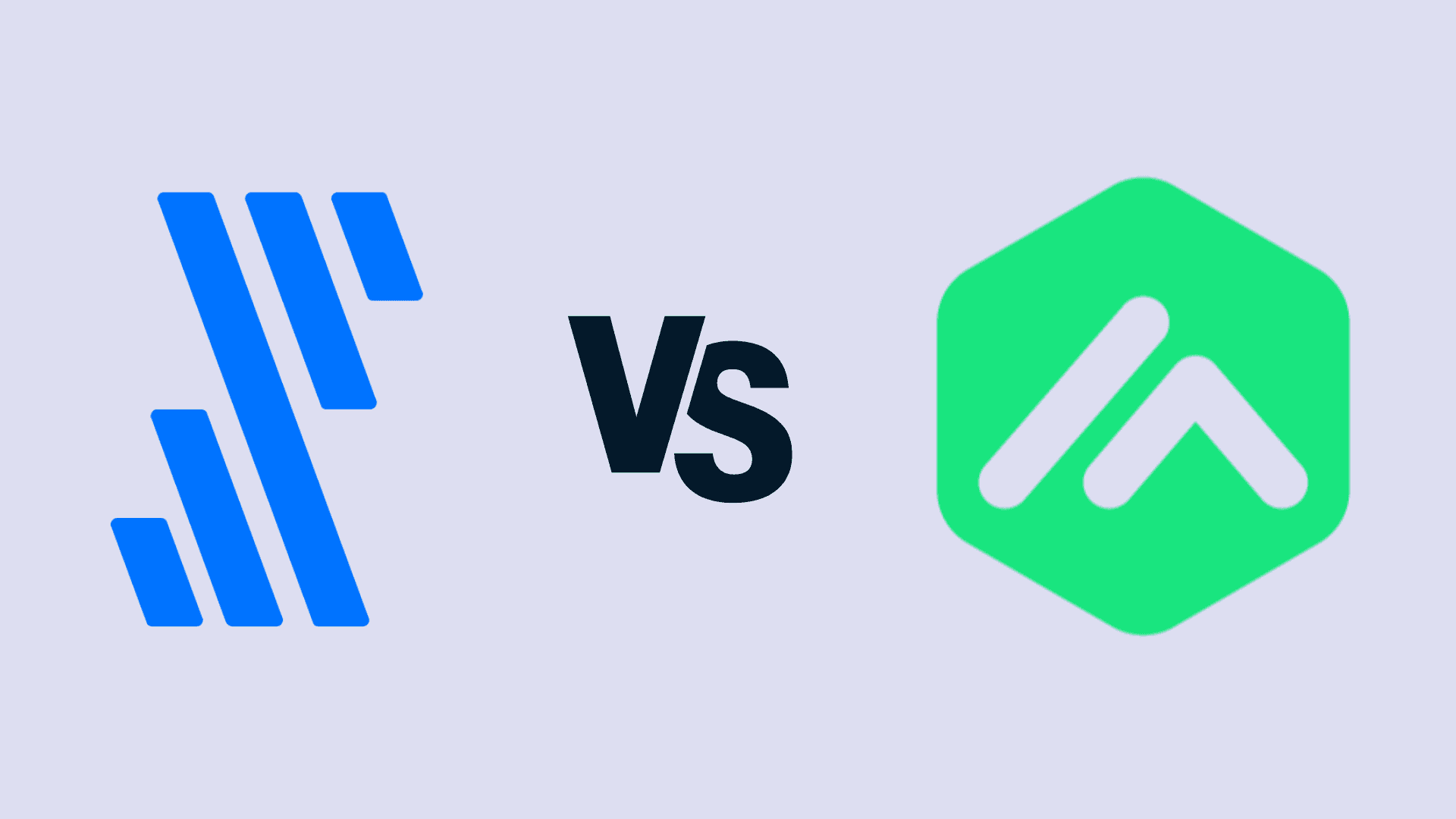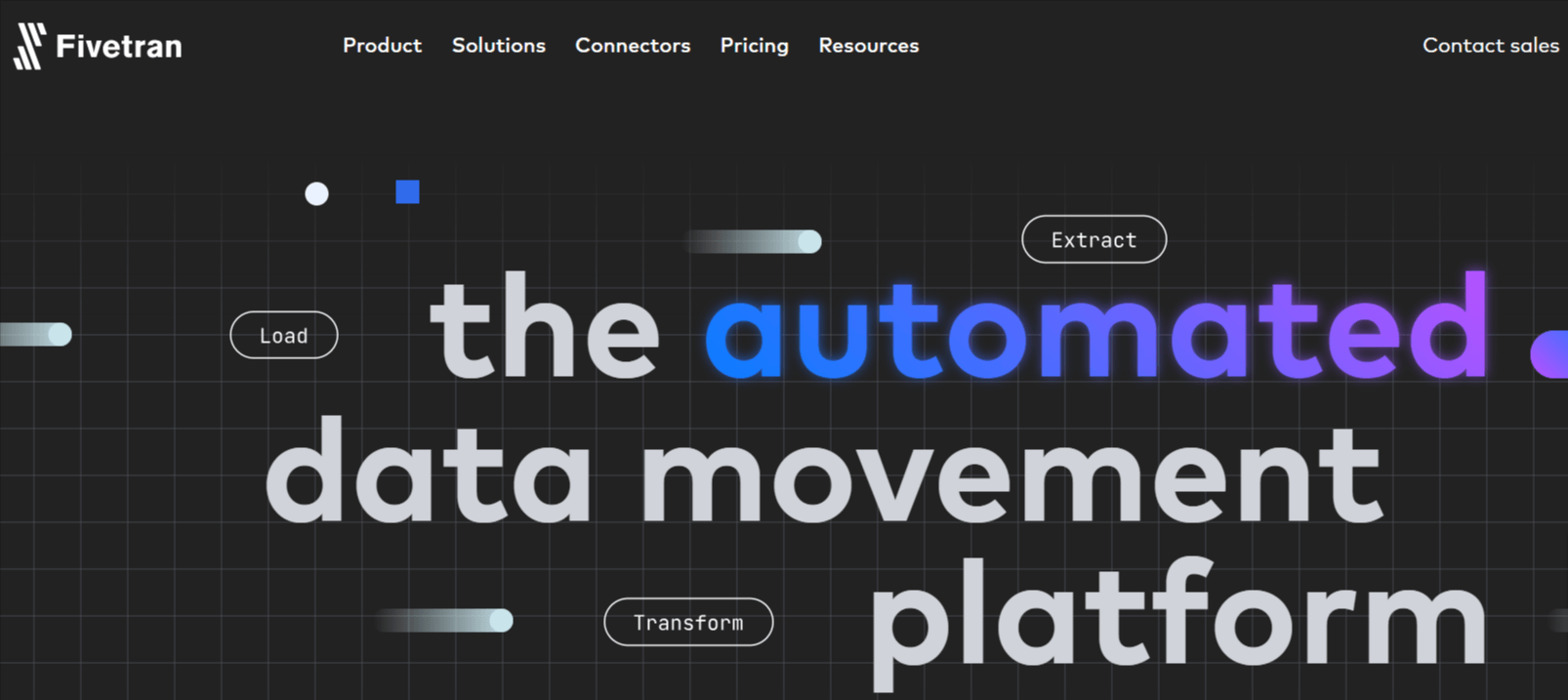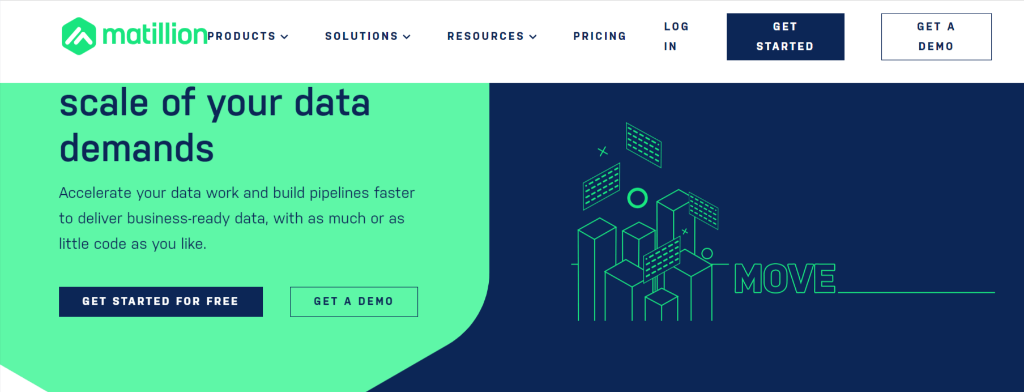
Choosing the right data integration solution is a difficult decision, especially since there’s an ever-growing number of tools on the market today.
However, selecting the right tool will save resources, costs, and your team’s time. Since many cloud-based, open-source, self-hosted tools are available, you need to do your due diligence and research your options to increase the chances you deploy the best one.
This article compares Fivetran vs. Matillion. It will help you understand the differences between two of the most popular data integration tools. Both are widely used platforms designed to help you carry out the data integration process.
Even though they both serve a similar purpose, there are several key differences between the two data integration products. Keep reading to learn about the specifics of both tools to find out which platform is best for your business requirements.
What Is Fivetran? An Overview
Fivetran, developed in 2012, is a fully managed cloud-based data movement platform that simplifies the data integration and transformation processes. With its multiple pre-built connectors, Fivetran allows you to extract and load data from various source systems into a centralized data warehouse or similar repository. You can also streamline several data integration processes — like data replication, synchronization, aggregation, and more. These processes allow you to gain near real-time insights by simplifying important data integration tasks.
What Is Matillion? An Overview
Matillion is a cloud-based data integration and transformation tool created in 2011. It provides a visual, low-code interface for designing, orchestrating, and managing data pipelines. This allows you to seamlessly move, transform, and load data to and from your cloud data warehouse or any database. Matillion supports several data sources and destinations, including Redshift, S3, BigQuery, Snowflake, Google Ads, and many more.
Fivetran vs. Matillion: Detailed Comparison
As you begin searching for a data integration platform, it’s important to understand the differences between Matillion vs. Fivetran. This will help you choose the right ETL tool for your data integration needs.
Fivetran vs. Matillion: Built-in and Custom Data Connectors
When selecting a data integration tool, it’s important to consider the availability of data source and destination connectors. While both Fivetran and Matillion allow you to connect multiple data sources, they differ in terms of their connectors and the level of customization options.
For example, Fivetran offers 300+ built-in connectors that allow you to work with a wide variety of applications and sources to move data seamlessly. If you have a custom data source or private API that Fivetran doesn’t support, you can create a custom connector as an extension of Fivetran with a Function connector.
Using this connector, you only need to write the cloud function to extract data from your source; Fivetran takes care of data transformation and loads it to your destination.
With the Function connector, you can write scripts to fetch data using any preferred language — including Go, Python, and Node.js. Similar to Fivetran standard connectors, the Function connector also provides features like incremental updates, automatic schema updates, data deduplication, event monitoring and troubleshooting logs, and more.
In addition to this connector, Fivetran offers customization with its Lite connector for any SaaS application. What sets the Lite connector apart from the Function connector is that Fivetran manages the entire process of building, maintaining, and updating Lite connectors. Unlike Function connectors, you don’t need to write code or manage the connector’s codebase.
Compared to Fivetran’s existing connectors, Lite connectors cover fewer endpoints and are built for specific use cases. Once a Lite connector is generally available, Fivetran doesn’t guarantee any further development or updates to address any other use cases. To build a Lite connector, Fivetran offers a By Request program where customers can ask Fivetran engineers to create connectors based on specific requirements.
On the other hand, Matillion only offers 100+ popular data sources and destinations. Like Fivetran, these connectors also simplify the process of extracting data from various sources and loading it into data warehouses or other storage solutions. In the event a required connector isn’t available from Matillion, you can build your own custom connector through the REST API.
Fivetran vs. Matillion: Schema Changes
Fivetran is designed to handle schema changes automatically. When a schema change occurs in the source, Fivetran continues to sync data without human interruption. It adapts to changes in the source schema, such as new columns or modified data types, and updates the destination columns accordingly.
On the flip side, Matillion supports limited schema drift capabilities, requiring manual adjustments to accommodate schema changes. When a schema change occurs in the source system, you need to identify it and make corresponding modifications in your ETL jobs. Although it has limited automation, it does provide greater flexibility to control how schema changes are managed. However, this also means you have more responsibility for tracking and implementing these changes.
Fivetran vs. Matillion: Orchestration
Fivetran allows you to organize tasks using Apache Airflow and continuous integration/ continuous deployment (CI/CD). Airflow is an open-source platform used for managing data pipelines. It allows you to create, schedule, and monitor workflows with code.
Contrary to Fivetran, Matillion provides built-in job orchestration features. You can quickly configure it through its user-friendly drag-and-drop interface. Unlike Matillion, Fivetran doesn’t offer a drag-and-drop interface for task management.
Fivetran vs. Matillion: Transformations
In Matillion, you can intuitively build straightforward transformation workflows through its graphical user interface (GUI), which is well-suited to users with limited coding experience. You can also create complex or custom transformations using SQL or Python scripts. Matillion further simplifies ETL tasks by offering a range of data model templates and transformation components.
To transform data in Fivetran, you can use SQL-based dbt, which provides advanced and customized data transformation capabilities. Fivetran also provides a no-code data transformation experience via the Quickstart data model that helps you convert your raw data into analytics-ready tables.
Fivetran vs. Matillion: ETL, ELT, Reverse ETL
ETL and ELT are two slightly different ways to move data from a source to a destination. Both processes include pulling data from the source, transforming it as required, and loading it into the target solution. The biggest difference is where the transformations happen.
Fivetran and Matillion both support data movement and transformation, but Fivetran employs ELT while Matillion offers both ETL and ELT data integration processes.
In addition, Matillion also supports reverse ETL, a data integration process that allows you to move data stored in data warehouses to business applications or operational systems. If you’re looking for more flexibility, Matillion may be the best option.
Fivetran vs. Matillion: Security Features
Fivetran offers both column hashing and column blocking. These are two important features to protect your sensitive data during data movement.
In column hashing, you can secure personally identifiable information (PII) by applying a hash function to the values within specific column data before moving the data to the destination. From an analytics perspective, this feature minimizes the risk of exposing PII.
Column blocking allows you to block or restrict access to specific columns within a table. This feature enhances data privacy and security by controlling who can access certain columns. Along with these features, Fivetran further extends its security with fine-grained role-based access control (RBAC), SSH and VPN tunnels, multi-cloud PrivateLink support (AWS, GCP, Azure), and comprehensive logging information.
In contrast, Matillion provides fine-grained RBAC but lacks native support for column hashing and column blocking. However, it does provide enhanced security features like audit logs, multi-factor authentication (MFA), and PrivateLink functionality for ETL processes via AWS VPC.
Fivetran vs. Matillion: Pricing Plans
Fivetran pricing plan follows a usage-based model where you pay for monthly active rows (MAR). Each MAR is only counted once per month, no matter how many changes. This may seem beneficial. But it can make actual pricing unpredictable because it’s hard to say how many rows change or how many times they change.
Additionally, Fivetran offers four basic plans designed for all kinds of users, from startups to global enterprises: Free, Starter, Enterprise, and Business Critical. If you’re looking for additional protections, you can use the Fivetran private deployment plan for secure database replication. This plan allows you to host Fivetran on-premises or in a virtual private cloud in your secure network. On top of this, Fivetran also allows you to use and check any new connector for free for 14 days.
On the other hand, Matillion provides a pay-as-you-go pricing model that bills you based on actual usage. This can be suitable if you have variable ETL workload requirements. Matillion offers Basic, Advanced, and Enterprise plans starting at $2/credit. You can also test the platform features before committing to any paid plan with a free 30-day trial period.
Estuary Flow - A Real-Time Data Integration Solution
Estuary Flow, a real-time data integration and replication service, is another alternative to Fivetran and Matillion. It helps you replicate your data from diverse sources to data warehouses or destinations of your choice. Estuary is a fully managed solution that not only automates the loading process but also manages schema evolution seamlessly. It allows you to synchronize data in real time, ensuring that the data in the target system remains up-to-date.
With its intuitive interface and comprehensive set of features, Estuary simplifies the complexities of data transformation and replication. In addition, its Change Data Capture (CDC) capabilities identify and capture changes made to the source data and ensure only the modified data is replicated in real-time. This allows you to focus on deriving insights from your data rather than managing the intricacies of the integration process.
Fivetran vs. Matillion vs. Estuary: At a Glance
Here’s a comprehensive comparison table outlining the differences between Fivetran, Matillion, and Estuary Flow:
Fivetran | Matillion | Estuary Flow | |
| Connectors (Source and Destination) | 300+ | 100+ | 150+ from Estuary Support for 500+ Airbyte, Stitch, and Meltano connectors |
| Custom Connector | Yes | Yes | Yes |
| SLA Support | Yes | Yes | Yes |
| Transformation | dbt with Python or SQL integration | SQL or Python scripts | SQL and JavaScript (ETL), dbt support (ELT) |
| Reverse ETL | No | Yes | No |
| Data Source Authentication | OAuth / API Keys | OAuth2.0 | OAuth 2.0 / API Tokens |
Fivetran vs. Matillion: The Final Word
Since you’ve made it this far, you’ve got a decent understanding of the differences between Fivetran and Matillion.
Fivetran is ideal when your main goal is efficient data replication, automation, extensive transformation, and no-code data integration. It’s particularly useful for handling frequent schema changes in source data.
Matillion is a go-to choice for organizations with ETL, ELT, and reverse ETL needs. Its drag-and-drop interface makes it easy to use for business users who want visual ETL development and lack coding knowledge.
At the end of the day, Fivetran and Matillion both offer unique features that make them suitable for specific business needs and analytical workflows. Ultimately, selecting the right tool for your data stack depends on your use case and unique requirements.
But if you are in search of a seamless, reliable, real-time data integration solution, try Estuary Flow. It allows you to connect data from various sources to destinations without having to write a single line of code, which helps reduce time and effort.
FAQs
- Does Matillion support cloud data warehouses?
Yes, Matillion supports cloud data warehouses such as Amazon Redshift, Microsoft Azure Synapse, BigQuery, Snowflake, and more
- Does Fivetran support third-party SaaS applications?
Yes, Fivetran supports third-party SaaS applications such as Salesforce, Hubspot, Marketo, Zendesk, and others.
- Do Fivetran and Matillion offer data integration and replication updates in real-time?
Depending on the sources, both Fivetran and Matillion support near-real-time data integration and replication.
Want to continue learning about the latest in modern data pipeline tools? Check out these in-depth comparison guides:

About the author
With over 15 years in data engineering, a seasoned expert in driving growth for early-stage data companies, focusing on strategies that attract customers and users. Extensive writing provides insights to help companies scale efficiently and effectively in an evolving data landscape.
Popular Articles













